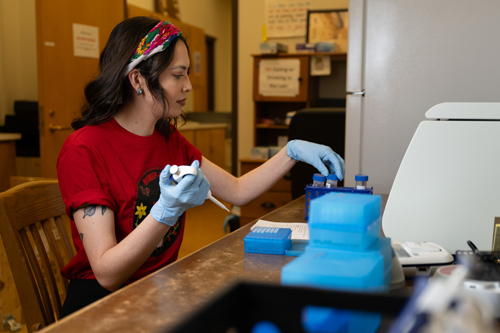In this research the authors concentrated on the belonging of microbes to different phyla and physiological groups, in order to understand, how different approaches to purification influence the population of activated sludge, and it in its turn influences the effectivity of the process. Although in general microbial population of different waste treatment plants was similar, there also were differences, caused by methods used on these plants.
Analysis showed that the most effective was a technology, developed in the Cape Town University, that consists in certain changes of oxygen and anoxic conditions, that provides effective disposal of organics, carbon, nitrogen and phosphorus by the microorganisms. As the authors expected, the basis of microbial population in the treatment plants using such method, consists of nitrobacteria, denitrifying bacteria and phosphate-accumulating bacteria, with which other strains don’t get along very well, because they need specific environment conditions.
Purification with the help of nitrification – denitrification effectively disposed only organics and nitrogen, therefore in the sludge there were discovered such microorganisms as nitrifiers and denitrifiers. However, there were little phosphate-accumulators, and phosphorus was left in the system; easily degraded organics was successfully processed by heterotrophs.
The worst results of effectivity of purification from organics and ammonium showed treatment plants with traditional oxybiotic system. There was not a great extension of inhabitants of anoxic areas, however due to nonideal supplying of reactors with oxygen (probably, bad mixing) anaerobic areas were formed in the balls of sludge anyway. Here began to work “eating” organics denitrificators, that are able to process only some part of nitrogen-containing bonds.
The scientists also tested to what extent microbiomes of active sludge from Moscow treating plants are similar with those described in other countries. It turned out that they are not similar to European or other groups and form the separate cluster on “the global tree”. In may be that contents of microbiomes in great degree depend on characteristics of waste waters, that are in greater degree defined by ecological, economic and cultural features of each city, than by features of technology of purification used there. For example, water charge for household usage is rather low in Moscow, there is no reason for economy, so rather dilute solutions of organics flow into canalization and its concentration turns out to be lower than in other world’s large cities.
Andrey Mardanov, Dr.Sci. (Biology), Professor Head of Center of Metagenomics and Engineering of Microbial Communities of Federal Research Center “Biotechnology” Russian Academy of Sciences:
-How do waste treatment facilities work?
-The waste water, that come to Moscow treatment plants, gets through several stages of purification. The first stage is the mechanical purification, that includes filtration of water on the grids, removal of mineral impurities in degrittors and water precipitation in primary settlers. The second stage includes biological purification of water in bioreactors – aerotanks and the following separation of sludge from renovated water in activated sludge clarifiers. In the bioreactors the purification of waters is made with the help of activated sludge by supplied air. In this case microorganisms of the activated sludge remove from water organic substance, nitrogen and phosphorus compounds. Before outfall in the water reservoirs purified waste waters are disinfected by ultraviolet.
-How biological purification is made?
-The biological purification is about removing from water the basic polluters – organic substance, nitrogen and phosphorus – with the help of the activated sludge, and precisely, with the help of microorganisms that inhabit it. For these microorganisms the polluters are the source of food, and by consuming them they purify waters. The process of biological purification takes place in the large bioreactors – aerotanks, that contain activated sludge. The waste waters are conveyed in these fermenting boxes and aerated depending on the technology, in order to provide microorganisms with amount of oxygen they need for their living.
-What kind of biological purification is the most effective one?
-There exists a lot of variants of biological purification. For example, sludge in bioreactors can be free-floating or develop in the shape of biofilm in the special feed. Instead of bioreactors-aerotanks can be used biological filters. There exist different technological modifications of biological purification, in that some or other groups of microorganisms work. You can’t tell which variant of purification is the best. The choice of the method depends on whole complex pf factors: the content of purified water, its amount, the necessary purification rate, climatological conditions, economic reasons etc. It must be stressed that technologies of waste waters purification are constantly improving thanks to scientific researches, operating practices of already working treatment plants, appearance of new materials. In the whole you can notice the gradual substitution of old technologies with new ones, more effective.
-What other methods can be used for water purification?
-There are also used physical-chemical methods of purification. For example, reactant purification, sorption, extraction, evaporation, anion exchange, ozonation, electroflotation, filtration, chloration. However, these methods are generally used for purification of not communal waste water, but industrial one.


